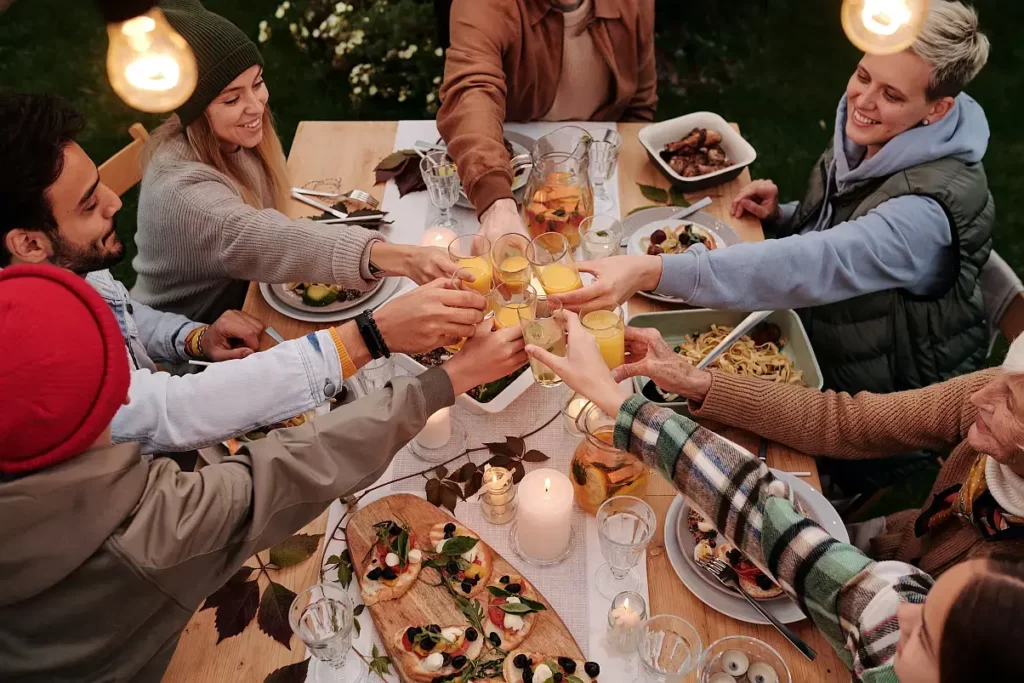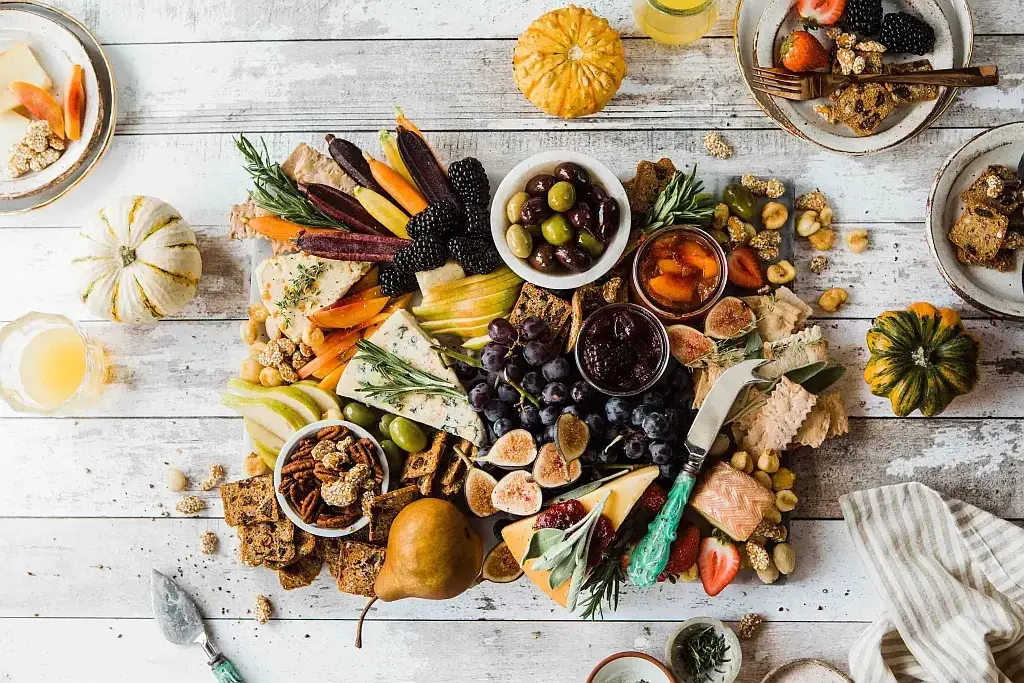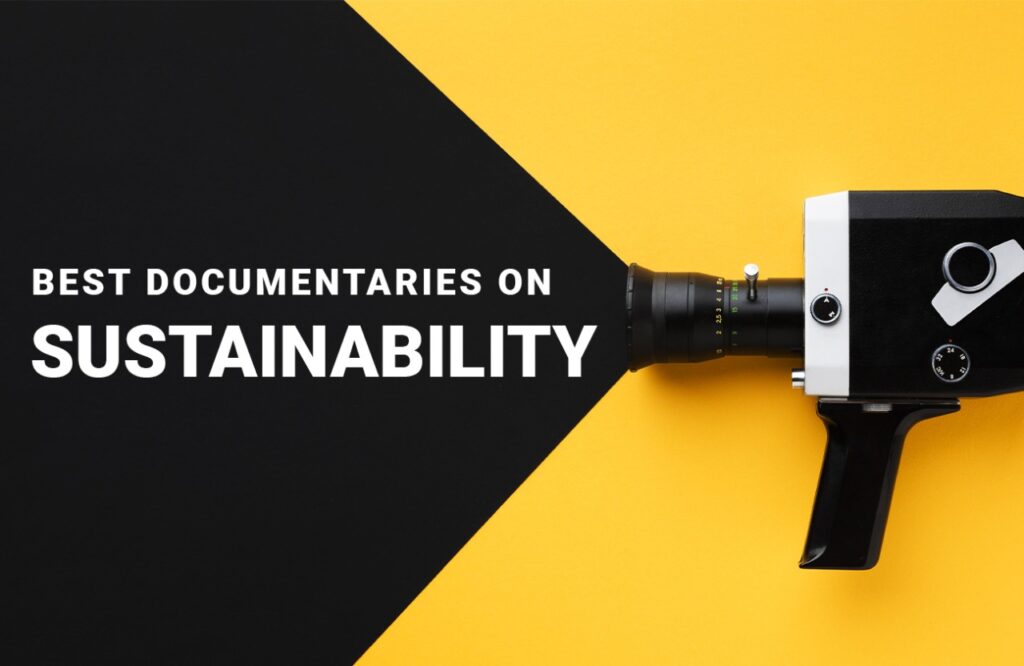Thanksgiving is a cherished time in American households – a holiday rooted in the tradition of giving thanks to nature for the plentiful harvest and the blessings of the past year. It’s about coming together with our loved ones to enjoy delicious spreads and create lasting memories. But in today’s world, the essence of Thanksgiving extends beyond the hearty feast. Every year, with tons of food wasted and volumes of disposable tableware overflowing the landfills after this holiday – eco-friendly Thanksgiving ideas are the need of the hour.
In this article, our focus is to make that switch easy for you. After helping you celebrate a Green Halloween with eco-friendly Halloween decorations, sustainable Halloween costumes, and eco-friendly Halloween treats, we are here to pave the way for a sustainable Thanksgiving. From tips on planning a mindful feast to DIY decor ideas, we aim to inspire a Thanksgiving that not only fills the heart but also leaves a lighter footprint on our planet.

30 Innovative Eco Friendly Thanksgiving Ideas
Sustainable Thanksgiving Meal Planning
- Locally Sourced and Organic Ingredients: For an eco-friendly Thanksgiving, choose to buy locally sourced ingredients and support nearby farmers. This course of action substantially reduces the carbon footprint associated with long-distance transportation and helps sustain the local economy. Plus, organic products eliminate your exposure to synthetic pesticides and fertilizers. So it’s a win-win for all! And hey! Don’t forget to bring reusable shopping bags for your groceries instead of disposable plastic ones.
- Check your Pantry Inventory: Before heading to the store for your Thanksgiving spread, review the ingredients you already possess and jot down the fresh items you need. This strategy not only aids in reducing unnecessary shopping but also keeps your budget intact. Early November presents a great opportunity to declutter your pantry, as some of the items you need might be tucked away at the back.
- Prepare Dishes from Scratch: Do you know that about 26% of carbon emissions result from the food production process? By lowering your consumption of processed and ready-to-eat foods, you can vouch for an eco-friendly holiday. Experiment with creating homemade dinner rolls, apple pies, and other items you would typically purchase prepacked. It not only adds a personal touch to your holiday feast but also offers a sense of accomplishment.
- Coordinate with Guests to Prevent Food Surplus: RSVP with your guests to get an accurate number of people visiting. If it’s a joint celebration where your guests are bringing dishes to the gathering, coordinate with them to keep track of what each person is contributing. Remember a successful dinner is all about proper organization. So plan thoughtfully to prevent food wastage and unnecessary duplication of items. Trust me, you wouldn’t want to end up with two large-sized pumpkin pies.
- Say No to Food Waste: Avoid preparing an excess of food—there’s no need to stir up twenty different dishes. Planning your eco-friendly Thanksgiving feast carefully can help immensely in minimizing food waste. A smart way to do so is to review your menu over the last couple of years. Think about which dishes were a Hit and which were a Miss among your guests. Include only those items which you know will be gorged down clean, cutting out the amount of leftovers.
- Encourage Mindful Eating: The mouthwatering aromas of Thanksgiving dishes can be tempting. But overloading a plate with 10 different items is the last thing one needs to do. Use smaller serving spoons to encourage moderate portions for your guests. When serving yourself, practice portion control by being mindful of the amount you put on your plate, reducing the likelihood of food scraps.
- Plant-Based Thanksgiving Menu: Every Thanksgiving, around 46 million turkeys are consumed. Adding to the horror, during the Thanksgiving holiday week, approximately 200 million pounds of turkey go to waste annually. This wastage is not only environmentally harmful but also involves the loss of sentient lives and valuable resources. That’s why a plant-based menu centered around vegetables, grains, and legumes instead of meat is your best bet. This reduces the environmental impact associated with animal agriculture, including greenhouse gas emissions and land use. Moreover, science has backed that plant-based meals are way healthier and can accommodate various dietary preferences.
- Leftover Storage: Leftovers are evident when you cook for a large crowd. Even a lot of ingredients from the dishes you’ll be preparing will pile up. So select recipes that allow you to make the most of any remaining ingredients. For instance: If a recipe requires half a container of broth, look for another dish that can utilize the remaining portion, which you might prepare in the coming days. Plan ahead for properly storing leftovers in safe food storage containers after the Thanksgiving lunch/dinner. Either incorporate extra food into future meals or consider donating excess food to local charities or food banks.

Responsible Turkey Selection
- Environmental Impact of Turkey Production: Yes, I get it, Thanksgiving without a Turkey is difficult to think about for many people. But do you know with the growing meat-dependent population, turkey farming has led to several resource-intensive practices, such as excessive water use and carbon emissions? In fact, research has proven that producing animal products demands 4 to 40 times the calories of crops to yield the same nutritional value. Being aware of the environmental impact of meat production can motivate you to make a shift to more eco-friendly turkey options.
- Knowing the Source: If you just can’t do without a turkey, choose responsibly by inquiring about its source. Shop for organically-raised, heritage-breed, or cage-free turkeys from your nearby farmer’s market or any local farmer in your area. These options involve more ethical, humane, and sustainable farming practices.
- Alternative Menu Options: Consider alternative menu options that prioritize environmental sustainability. If you’re hosting a small crowd, go for a small bird like a cage-free chicken instead of setting the table with a large turkey. Again, pescatarian menus are a fantastic and unique choice to lower the ecological footprint of traditional meat or poultry items. On the other hand, vegan or plant-based dishes eliminate the need for animal products altogether. Believe it or not, there are plenty of yum vegan recipes that you can make and impress your guests this Thanksgiving.
Energy Efficient Cooking
- Energy-Efficient Appliances: Using energy-efficient appliances such as non toxic air fryers, convection ovens etc., can significantly reduce power consumption during meal preparation. These appliances are engineered to circulate heat more effectively and come with multiple pre-settings and functions, requiring less time and energy to cook dishes.
- Non-Toxic Cookware: Delicious meals can become hazardous if they are not cooked and served in safe cookware. So for your own safety and that of your guests, consider switching to sustainable kitchen swaps, non toxic slow cooker, non toxic non stick frying pans, non toxic dinnerware, etc., to whip up meals that are not only lip-smacking but also truly nutritious.
- Efficient Cooking Techniques: Plan your cooking process to minimize energy use. Cook multiple dishes simultaneously in the oven or on the stove to make the most of your cooking appliances. Desserts and pies that can be prepared with the same cooking temperature should be plopped in the oven altogether. Use lids on pots and pans to reduce cooking time and maintain heat.
- Set Timer to Avoid Overcooking: Use a timer app on your phone that can manage multiple timers simultaneously. Set timers for all dishes that have the potential to overcook or burn, with particular attention to items like the bread or the pie.
Reduce Reuse Recycle
- Reusable Table Setting: When arranging the table for your Thanksgiving meal, opt for reusable dishes instead of disposable dishes. This choice will not only be cost-effective but will also help cut down on plastic waste and its environmental impact. Consider adding cloth napkins to your table settings for a more elegant touch, as they are not only sustainable but also classier than paper napkins. If reusable options aren’t available, opt for biodegradable tableware that can naturally decompose, returning to Mother Earth.
- Minimizing Leftovers: Plan portion sizes carefully for the number of guests visiting in order to minimize leftovers. Encourage guests to bring their reusable containers for taking home leftovers. This approach works great in saving you from drowning in excess food the next day and the need for disposable takeout containers for your guests. Composting food scraps instead of throwing them away is a great sustainable Thanksgiving idea to reduce tons of food waste in landfills. You can use this compost to nourish the soil of your kitchen garden or backyard.
- New Dishes out of Old: Transform your leftovers into fresh creations – turkey can be incorporated into soups or salads, or used as a taco or burrito filling. Leftover stuffing can be turned into stuffing meatballs, while gravy can be repurposed into a delectable pasta or vegetable sauce. With a dash of creativity, Thanksgiving leftovers can be as delightful as the original feast.
- Implementing Recycling: Set up a designated recycling station for items like glass bottles, cans, and paper products. Clearly label bins or containers to ensure proper recycling and educate guests on the recycling process and its importance for a healthy environment.
Green Clean-up Tips
- Save Water: Conserve water and energy by being mindful of your dishwasher use. Opt for shorter cycles, pack the dishwasher full, and skip the drying cycle. After the final rinse, either air-dry the dishes by leaving the door open or gently dry them with a towel. This way, you can be more eco-friendly with your post Thanksgiving clean-up task. And don’t forget to use gentle eco-friendly cleaning agents.
Eco-Friendly Decorations
- Natural and Reusable Elements: Incorporate natural elements like pinecones, acorns, gourds, pumpkins, dried corn husks, or colorful leaves in your decorations. You can even go for DIY place cards with natural items as part of your table settings. These can be gathered sustainably and returned to nature after use. Invest in reusable decor items like quality table linens, cloth napkins, and dishware to reduce the need for disposable decorations.
- DIY Eco-Friendly Decor: Channel your inner creativity with Do-It-Yourself (DIY) decoration projects that involve upcycling, repurposing, or using sustainable materials. It’s the cozy season and the outdoors are filled with gorgeous autumnal delights that can be transformed into amazing centerpieces. Also, utilize regular household items like mason jars, old books, fabric scraps, or holiday lights and decorate your home in a one-of-a-kind way.
- Schedule your Holiday Lighting: Use a timer for your holiday lighting to reduce energy consumption. Opt for energy-efficient LED Christmas lights and solar-powered decorations, and set a timer to control when the lights are on, reducing the risk of leaving them on unnecessarily. Smart power strips can also help eliminate standby energy loss. Enhance the glow of your tree lights by adding shiny, reflective ornaments. This way, you can enjoy your festive decorations while conserving energy.

Eco-friendly Thanksgiving Activities
- Nature Walks: Let’s root for a Thanksgiving that’s not only about eating but is a genuine and holistic celebration. Planning out simple eco-friendly activities for the day is an amazing way to make the most of this holiday with our loved ones. Organize guided nature walks or hikes for your Thanksgiving gathering. Connect with your surroundings, learn about the local flora and fauna, and instill an appreciation for nature.
- Community Excursions: Consider planning community excursions to conservation areas, parks, or environmental initiatives. Volunteering as a group on this special day provides an opportunity to give back to the community and the environment.
- Seed Planting and Donations: Incorporate activities like planting seeds or donating saplings to symbolize growth, renewal, and sustainability. This not only engages guests but contributes to reforestation efforts and environmental conservation.
Support Eco-Conscious Brands
- Shop from Mindful Retailers: For packaged pantry ingredients, eco friendly Thanksgiving items and decor ideas, choose to shop from sustainable brands who strive to reduce the environmental impact of their products and the holiday season. Begin by researching and prioritizing brands known for their eco-friendly practices, placing an emphasis on sustainability, ethical production, and environmentally friendly sourcing. For food products be on the lookout for relevant certifications like USDA Organic, Fair Trade, or Non-GMO Project Verified, as they signify adherence to specific environmental and ethical standards. For gift and decor items consider things made from sustainable materials with minimal or recyclable packaging.
Avoid Travelling and Celebrate at Home
- Skip the Travel Stress: Thanksgiving is a time for gathering with loved ones, and it’s no surprise that it leads to heavy highway travel in the United States. Yet, this extensive travelling can take a toll on the environment. Consider carpooling, using public transportation, or minimizing your travel during the holiday. If you’re nearby, enjoy a pleasant autumn stroll as an eco-friendly alternative. Or best, stay at home, plan holiday fun games with your family and spend some much-needed quality time.
Skip Shopping Spree on Black Friday
- Stay Away from Black Friday Crazy Deals: Don’t fall prey to the frenzy of Black Friday shopping, even though it offers exciting discounts. Consider the consequences of this shopping extravaganza, where nearly 80% of Black Friday purchases ultimately end up in landfills. Instead, pause and reflect: Is it truly necessary to buy something just because it’s on sale? Do you really need it? For eco-friendly Thanksgiving gifts, explore alternatives like crafting handmade items or expressing your sentiments through heartfelt letters. Support local artists by customizing unique creations, or opt for experience-based gifts, such as a baseball game, movie marathon, or a beach trip. You can also shop for vintage second-hand gifts.
Acknowledge the History of Thanksgiving
- Learn about Thanksgiving’s Roots: Thanksgiving is a time for expressing gratitude for our blessings and loved ones. But while we celebrate that, it’s equally crucial to delve into the historical context of this holiday and give voice to the often overlooked narratives of Native Americans. Gaining a comprehensive understanding enables us to celebrate Thanksgiving thoughtfully and conscientiously. This, in turn, will nurture a deeper appreciation for the contributions and heritage of native communities.

Why Celebrate Thanksgiving in an Eco-Friendly Manner?
Gratitude for Nature
Thanksgiving commemorates the harvest season, with roots tracing back to early colonial times in North America. It’s a time when we express gratitude for the bountiful yields that nature provides. Recognizing this, eco-friendly Thanksgiving is an extension of our appreciation for the Earth’s resources. It’s an acknowledgement of the interconnectedness between the abundance of food on our plates and the ecosystems that nurture this abundance. Celebrating in an environmentally conscious way serves as a reminder of our deep ties with nature and our shared responsibility for preserving its well-being.
Aligning with the Spirit of Gratitude
The concept of gratitude itself is closely linked to mindfulness and responsibility. An eco-friendly Thanksgiving moves beyond the act of gathering around a table laden with food. It’s a representation of gratitude for the very ecosystems that make this feast possible. It signifies an elevated level of awareness concerning our interdependence with nature, highlighting that our actions have direct consequences for the planet’s health. In this light, Thanksgiving becomes more than just a celebration – it becomes a reflection of our consciousness regarding Mother Earth’s well-being.
Reducing Environmental Impact
Yes, traditional celebrations are fun, but they usually come with a negative environmental impact. In order to cater to the ever-growing population’s holiday needs, tons of ingredients, especially out-of-season produce are transported over long distances, escalating the carbon footprint of the holiday. Additionally, the extensive waste generated through disposable tableware further intensifies the ecological strain. Sustainable Thanksgiving ideas give you an opportunity to mitigate these negative effects. It allows us to minimize waste, conserve valuable resources, and diminish greenhouse gases. It’s an eco-conscious way of being grateful in the truest essence, not only in words but also in action.

Setting an Example
Celebrating Thanksgiving in an eco-friendly manner serves as a role model for our kids. It teaches them the importance of environmental stewardship and the value of making sustainable choices in all facets of life. As parents and grandparents embrace eco-conscious practices during Thanksgiving, they convey the principles of responsibility and sustainability to their children and grandchildren. This educational aspect contributes to nurturing a generation that’s more attuned to the planet and capable of addressing its challenges.
Supporting Local Communities
A strong aspect of an eco-friendly Thanksgiving is to support our local communities. This includes the utilization of locally sourced ingredients and organic products harvested or manufactured in our region. This choice not only uplifts our domestic economy by sustaining local farmers and businesses but also reduces the carbon footprint associated with long-distance transportation. Such values enhance community well-being, create a bond of togetherness and safeguard the existence of small-scale, sustainable farming practices.
Redefining Traditions
Everything needs a change, whether it’s life or a holiday, to keep the excitement on! Reimagining Thanksgiving traditions through green practices adds a fresh and creative dimension to the holiday. It inspires us to reconsider our approaches to food, decorations, and celebrations. This inventive shift adds new meaning and purpose to Thanksgiving, rendering it an even more fulfilling and profound experience. It encourages us to think out of the box and consider how our choices can make a positive impact on the environment and the generations to come. An eco-friendly Thanksgiving isn’t merely an ecological choice; it’s a way to deepen our gratitude, environmental consciousness, and our connection to the world around us.
To Summarize…
Thanksgiving is a responsible way to show gratitude to the planet that sustains us. It’s about being aware of our choices! From the food we serve to the way we decorate and celebrate – on this day, we can make a lasting impact on our environment and future generations. As we gather around tables adorned with delectable spreads and share stories with family and friends, let’s also celebrate and pledge to protect the planet that has provided us with these bountiful gifts. Let’s set an example for our children, teaching them the values of responsibility and sustainability. By organizing a holiday that is less wasteful and more mindful, we can ensure that our gratitude extends far beyond this season.
Here’s to a Happy Thanksgiving!







